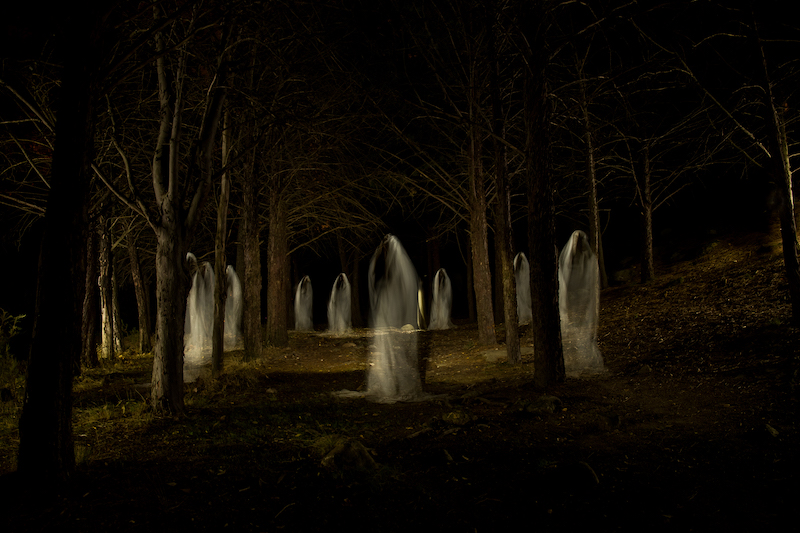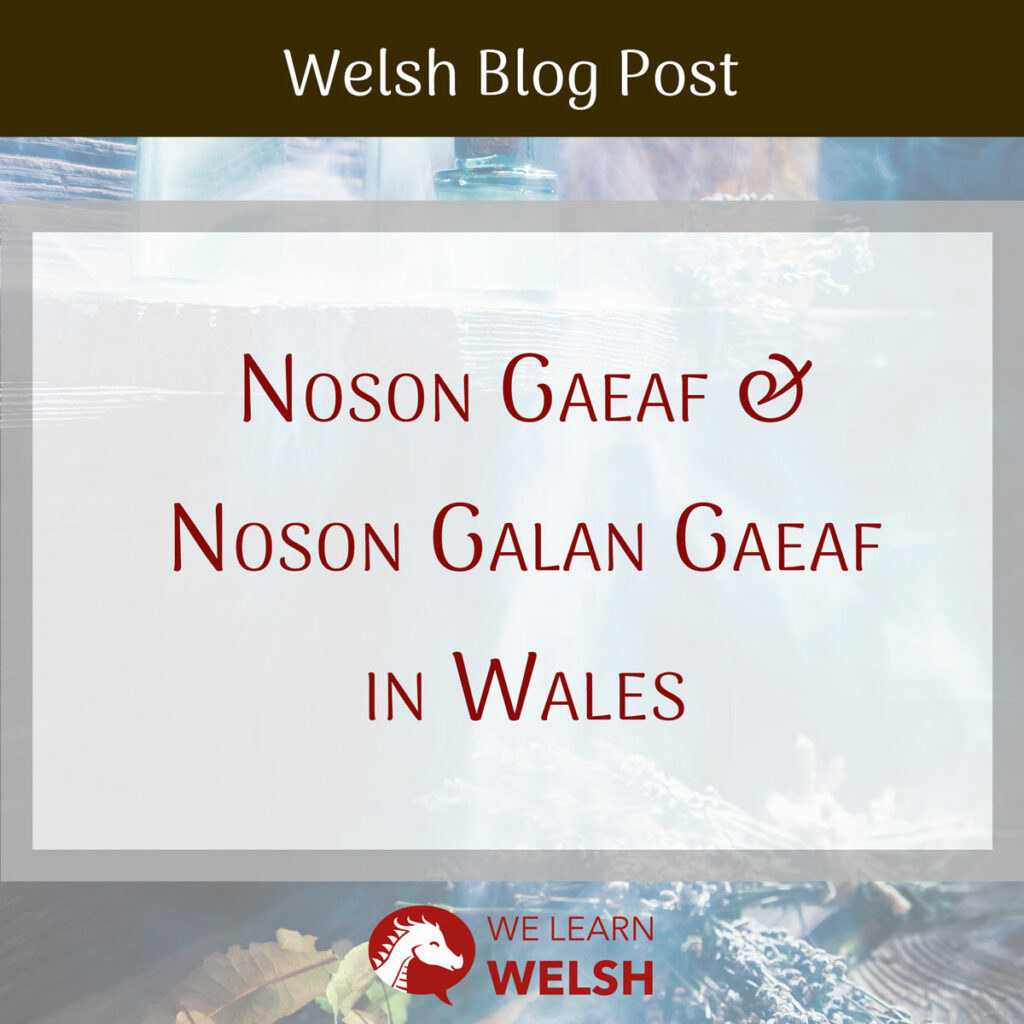When October 31st arrives, much of the world celebrates Halloween these days. But in Wales, the night and day that follows are steeped in traditions much older than pumpkins and trick-or-treating. These are Noson Galan Gaeaf (“the night before the first day of winter”) and Calan Gaeaf (“the first day of winter”), marking the transition into the dark half of the year.
Unlike Halloween’s modern trappings, these Welsh observances draw on centuries of folklore, language, and community ritual. To understand them, we need to start by taking a look at the words themselves.
- Calan – This word comes from the Latin kalendae, meaning the first day of the month. Roman influence left its trace on the Welsh calendar, and calan appears in other Welsh festivals too, such as Calan Mai (“May Day”) and Calan Haf (“the first day of summer”). It also has cognates in Breton (qualan) and Irish (kalaind). The plural of calan can be either calannau or calannoedd and it’s a masculine noun.
Interesting fact: Did you know that the English word calendar is also derived from kalendae? Hopefully this similarity will help you remember the Welsh word too!
- Gaeaf – Meaning “winter” in Welsh, this word is ancient, tracing back to Proto-Celtic roots (gyemos, meaning “winter” or “cold season”). For early communities that obviously could not rely on supermarkets for sustenance, winter was a season of survival, scarcity, and inward living. The plural of gaeaf can be either gaeafau or gaeafoedd and it’s a masculine noun.
Together, Calan Gaeaf literally means “the first day of winter.”
Calan Gaeaf
Noson Galan Gaeaf adds noson (“night”), so it refers to the night before the winter’s first day, corresponding to October 31st. You may also hear Nos Galan Gaeaf, with nos also meaning “night.” Note that Calan soft mutates to Galan due to the presence of Noson / Nos.
Noson Galan Gaeaf
Noson Galan Gaeaf: A Spirit Night
Welsh tradition holds that Noson Galan Gaeaf was an ysbrydnos (ysbryd + nos – literally “spirit night”), when boundaries between the living and the dead blurred, and the veil between our world and the Annwfn / Annwn (the so-called “Otherworld”) was at its thinnest. People feared wandering spirits, so they stayed clear of mynwentydd (graveyards), croesffyrdd (crossroads) and camfeydd (stiles).
Stories tell of the Hwch Ddu Gwta, a fearsome tailless black sow that would catch the last child to return home in the evening, and the Ladi Wen, a ghostly white lady, haunting those who strayed after dark and luring night-wanderers to their doom by asking for help or offering treasure. Tales like these gave rise to poems and chants such as:
Adref, adref am y cynta’, Hwch Ddu Gwta a gipio’r ola’
Be sure you are the first at home, the tail-less black sow is sure to roam.
The above is a neat translation which retains the rhyme, but word-for-word, this means: Home, home for the first, the tail-less black sow will kidnap the last.
Gwrachod (witches) were another familiar sight. Often inebriated men in disguise as women, they would go from door to door demanding darnau arian (coins), ffrwythau (fruit), and cnau (nuts), a custom that likely sowed the seeds of today’s trick-or-treating tradition.
For those drawn to the macabre, one custom involved inscribing your name on a stone and casting it into a large coelcerth (bonfire) on the night of the 31st. By dawn, if your stone could not be found among the ashes, it was taken as a chilling omen of death in the year to come. The coelcerth tradition wasn’t entirely sombre, though. Villagers would gather to canu (sing), dawnsio (dance), twco fala (bob for apples), and play games around the bonfire, believing its glow and warmth offered protection from the restless spirits nearby.
An even darker custom urged the brave to run around the local eglwys (church) three times before peering through its keyhole where, it was said, the faces of those fated to die in the coming year would appear.
November 1st marked both a practical and symbolic shift into winter. With the dawn of Calan Gaeaf, daily life resumed, and the fears of the previous night were left behind.

Modern Wales celebrates Halloween much like elsewhere, with costumes, sweets, and parties. But growing interest in Welsh folklore has brought back attention to Noson Galan Gaeaf. Storytellers, festivals, and heritage groups are reviving these traditions, not only as quaint curiosities but as living parts of Welsh identity.
This winter, as the nights grow long and the chill takes hold, take a moment to reflect on these age-old traditions – many of which, I think, are far spookier than those associated with Halloween!
Sources:

